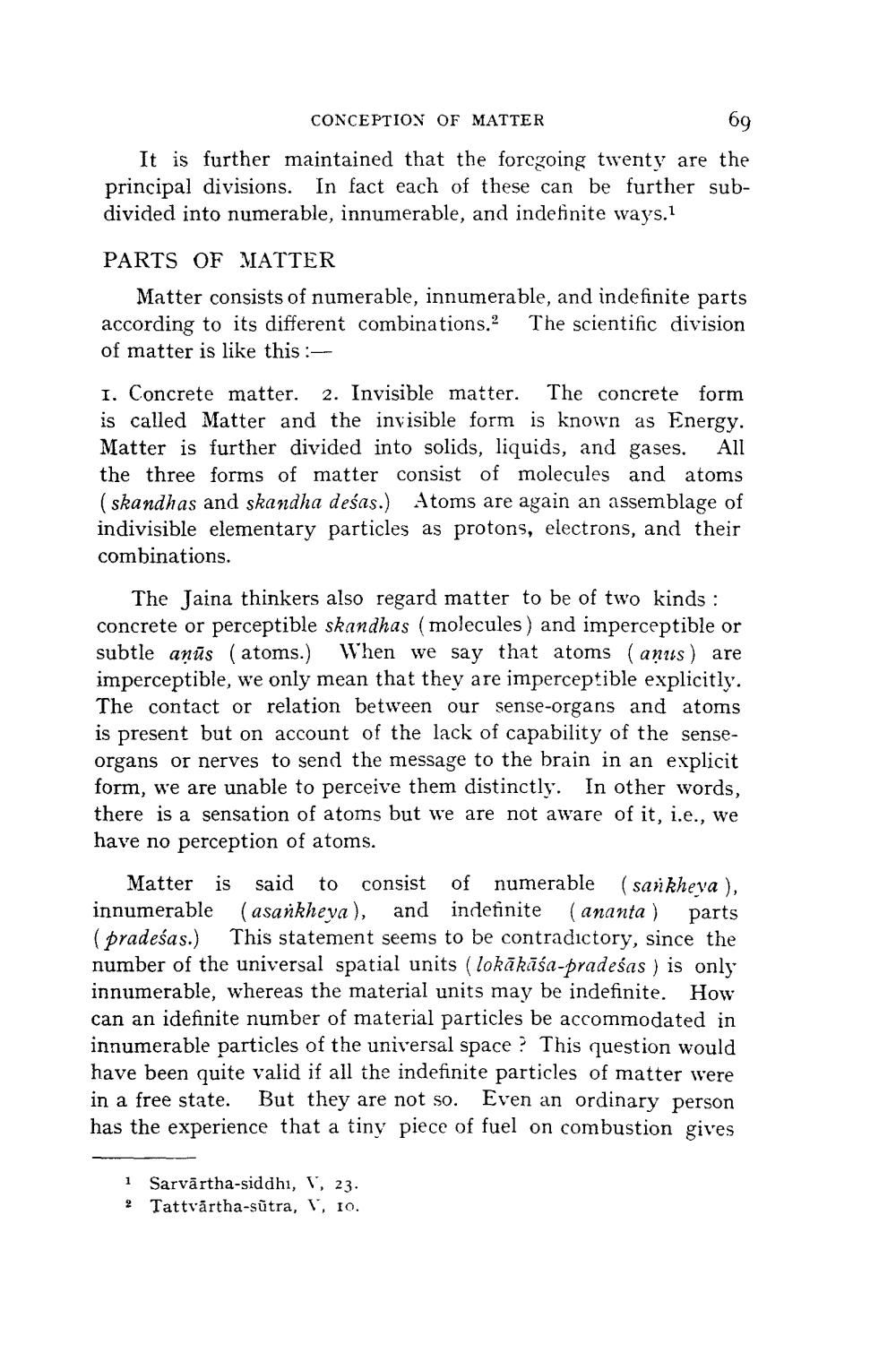________________
CONCEPTION OF MATTER
69
It is further maintained that the foregoing twenty are the principal divisions. In fact each of these can be further subdivided into numerable, innumerable, and indefinite ways.1
PARTS OF MATTER
Matter consists of numerable, innumerable, and indefinite parts according to its different combinations. The scientific division of matter is like this:--
I. Concrete matter. 2. Invisible matter. The concrete form is called Matter and the invisible form is known as Energy. Matter is further divided into solids, liquids, and gases. All the three forms of matter consist of molecules and atoms (skandhas and skandha deśas.) Atoms are again an assemblage of indivisible elementary particles as protons, electrons, and their combinations.
The Jaina thinkers also regard matter to be of two kinds : concrete or perceptible skandhas (molecules ) and imperceptible or subtle anūs (atoms.) When we say that atoms (aņus) are imperceptible, we only mean that they are imperceptible explicitly. The contact or relation between our sense-organs and atoms is present but on account of the lack of capability of the senseorgans or nerves to send the message to the brain in an explicit form, we are unable to perceive them distinctly. In other words, there is a sensation of atoms but we are not aware of it, i.e., we have no perception of atoms.
Matter is said to consist of numerable (sarkheva ), innumerable (asankheva), and indefinite (ananta) parts (pradeśas.) This statement seems to be contradictory, since the number of the universal spatial units (lokākāśa-pradeśas ) is only innumerable, whereas the material units may be indefinite. How can an idefinite number of material particles be accommodated in innumerable particles of the universal space ? This question would have been quite valid if all the indefinite particles of matter were in a free state. But they are not so. Even an ordinary person has the experience that a tiny piece of fuel on combustion gives
1 Sarvārtha-siddhi, 1, 23. 2 Tattvārtha-sútra, 1, 10.




